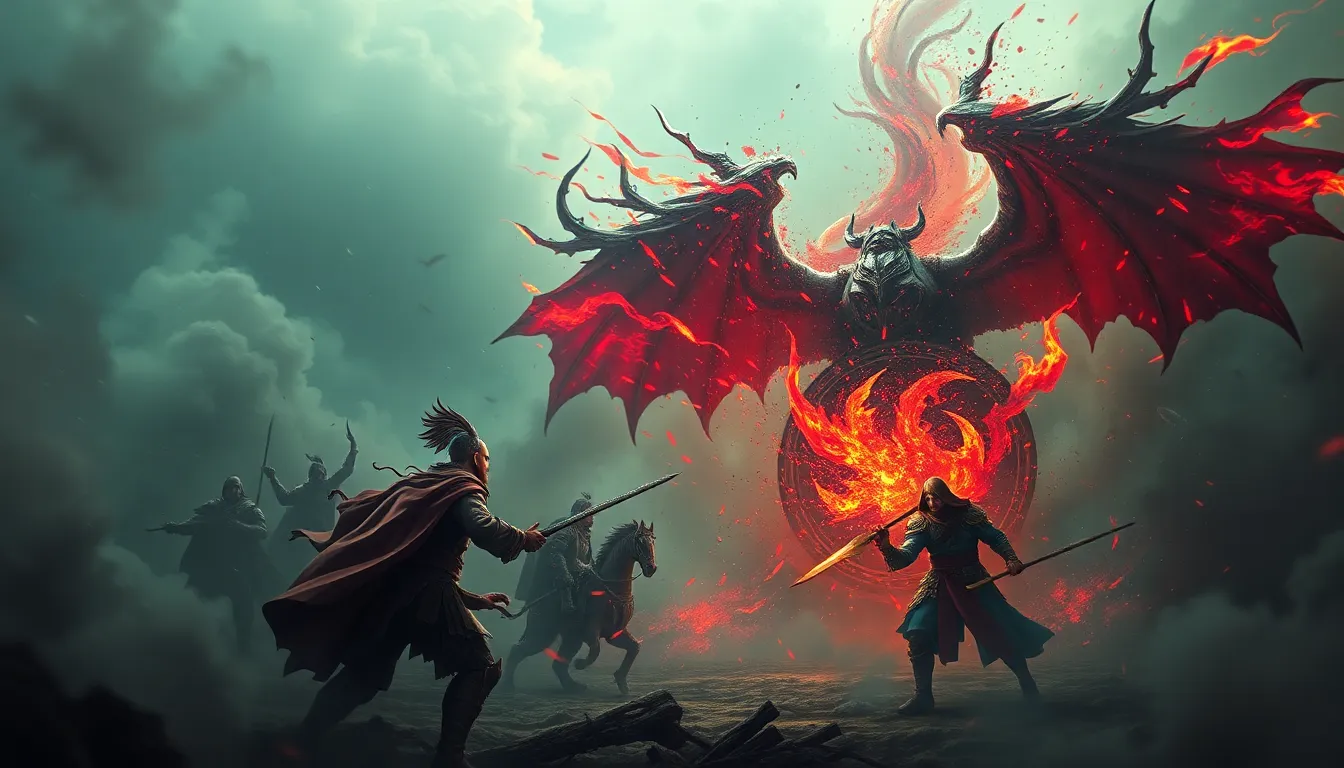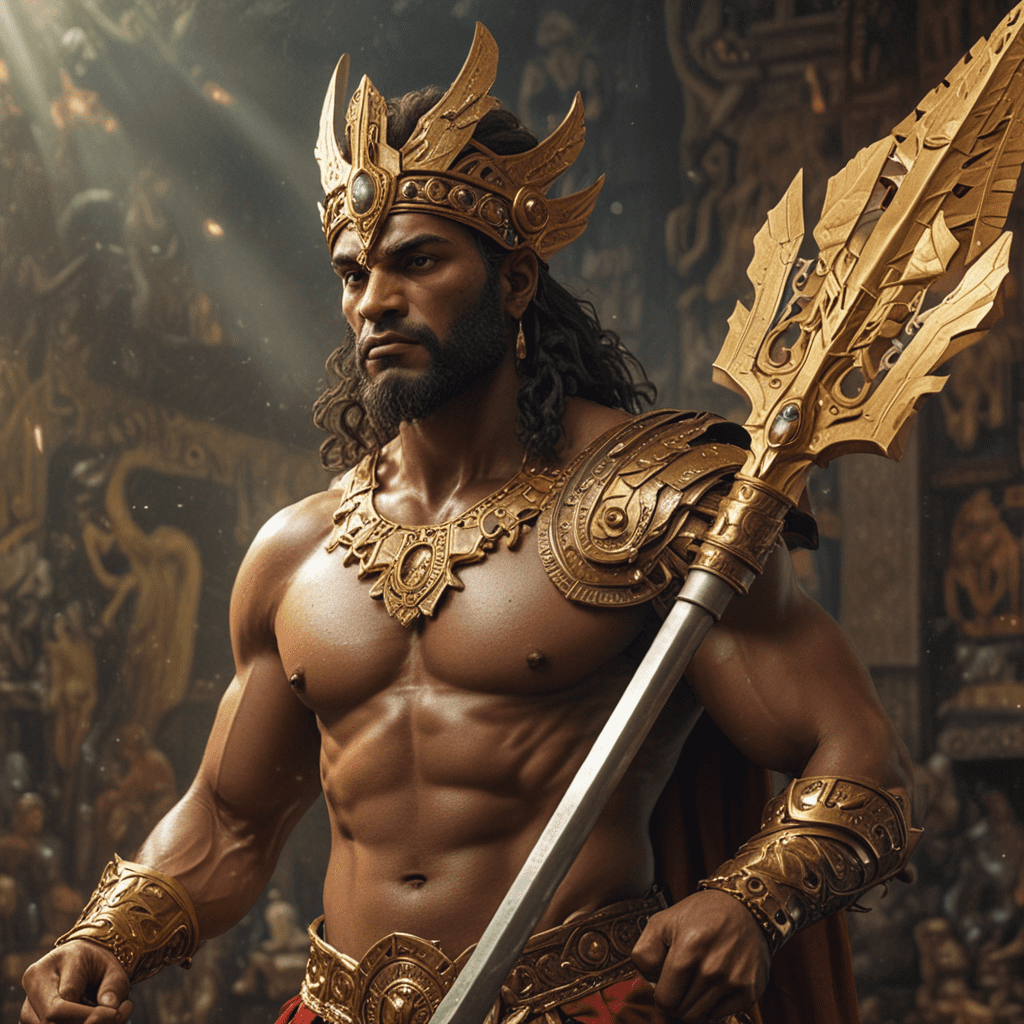The Hydra’s Puzzle: Deciphering the Monster’s Role in Ancient Greek Political and Social Systems
I. Introduction
The Hydra, one of the most infamous monsters in Greek mythology, is often depicted as a multi-headed serpent that poses insurmountable challenges to those who dare to confront it. Its image has transcended time, symbolizing various struggles and adversities faced by individuals and societies alike.
Monsters like the Hydra play a significant role in ancient narratives, serving as metaphors for human fears, societal conflicts, and political dilemmas. This article aims to explore the symbolism of the Hydra, particularly in the context of ancient Greek political and social systems, shedding light on its implications and enduring legacy.
II. Mythological Background of the Hydra
The Hydra is rooted in ancient Greek mythology, particularly in the tales surrounding the hero Heracles (Hercules) and his Twelve Labors. According to myth, the Hydra resided in the swamps of Lerna and was known for its formidable regenerative abilities; when one head was severed, two more would grow in its place.
This creature was said to be the offspring of Typhon and Echidna, embodying chaos and destruction. Its key characteristics—regeneration, venomous breath, and immense strength—make it a powerful symbol of resilience and danger. The battle between Heracles and the Hydra not only highlights the hero’s strength but also reflects the trials and tribulations of confronting overwhelming challenges.
In Heracles’ tale, the Hydra represents not only a formidable foe but also the complexities of overcoming seemingly insurmountable obstacles, a theme that resonates throughout ancient Greek society.
III. The Hydra as a Symbol of Political Challenges
The Hydra serves as a potent metaphor for political strife, representing the multifaceted and often cyclical nature of political conflicts. Just as Heracles faced the challenge of the Hydra, political leaders throughout history have encountered persistent issues that seem to multiply when one is addressed.
- Regenerative Abilities: The Hydra’s ability to regenerate its heads can be interpreted as a reflection of political resilience; issues may evolve and multiply, making governance a complex task.
- Political “Hydras”: Historical examples of political “Hydras” in ancient Greece include the persistent challenges of tyranny, democratic instability, and factionalism, where solving one problem often led to the emergence of another.
These challenges emphasize the need for strategic thinking and adaptability in political leadership, echoing the lessons learned from the myth of the Hydra.
IV. Social Implications of the Hydra Myth
The Hydra also embodies social fears and anxieties prevalent in ancient Greek society. Its monstrous nature reflects the collective insecurity regarding chaos and disorder that could arise within communities.
- Community Identity: The narrative of the Hydra fosters a sense of community identity, uniting citizens against a common adversary, thereby strengthening social bonds.
- Social Structures: The Hydra’s presence in myths can also be seen as a commentary on social hierarchies and the challenges faced by the marginalized, representing struggles against oppression and fear.
By confronting the Hydra, Heracles not only seeks personal glory but also addresses the wider social implications of fear and chaos within the community.
V. The Hydra in Artistic and Literary Representations
The Hydra has been depicted in various forms of ancient art and literature, from pottery to epic poetry, showcasing its significance in cultural narratives. These representations often highlight the themes of heroism, struggle, and the tension between civilization and chaos.
- Influential Works: Notable works include Ovid’s “Metamorphoses” and the numerous depictions on vases and sculptures that illustrate the battle between Heracles and the Hydra.
- Public Perception: These artistic representations influenced public perception, serving as reminders of the ever-present challenges within society and the heroic efforts required to overcome them.
As artistic styles evolved, so did the imagery of the Hydra, reflecting changing societal values and concerns across different historical periods.
VI. The Hydra’s Legacy in Modern Political Discourse
The Hydra’s symbolism has persisted into modern political discourse, where it serves as a metaphor for various contemporary challenges. Politicians and activists alike invoke the image of the Hydra to describe complex social and political issues that seem to multiply, evoking the ancient struggle against overwhelming odds.
- Contemporary References: The Hydra is often referenced in discussions about systemic issues such as poverty, crime, and corruption, illustrating the ongoing relevance of this mythological creature.
- Modern Movements: Social movements addressing multifaceted problems, such as climate change and inequality, frequently use the Hydra as an emblem of the enduring fight against persistent adversities.
This metaphorical language illustrates the continued impact of the Hydra myth on our understanding of political and social dynamics today.
VII. Comparative Analysis: The Hydra and Other Mythical Beasts
When analyzing the Hydra alongside other mythical beasts in Greek mythology, several similarities and differences emerge. Creatures such as the Minotaur and Cerberus also embody significant political and social themes, yet each monster reflects unique aspects of the human experience.
- Similarities: Like the Hydra, other monsters often symbolize chaos and the need for heroic intervention, representing the struggles inherent in the human condition.
- Differences: For instance, while the Hydra regenerates and represents cyclical challenges, the Minotaur symbolizes the internal conflicts within society and the necessity of confronting one’s own darkness.
Through these comparisons, we can see how different monsters serve varied functions in shaping cultural narratives and addressing social themes in ancient Greece.
VIII. Conclusion
The Hydra’s multifaceted role in ancient Greek political and social systems illustrates the intersection of mythology with the realities of human experience. It serves not only as a tale of heroism but also as a reflection of the enduring challenges faced by societies throughout history.
As we reflect on the significance of the Hydra in contemporary society, it becomes clear that the lessons learned from this myth are as relevant today as they were in ancient times. The Hydra continues to embody the complexities of politics, the anxieties of social life, and the heroic efforts required to confront and overcome adversities.



